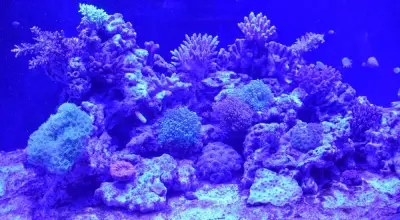“Maybe by mid-to-end of the 2030s we can start pushing out of the Earth-Moon system and land astronauts on Mars,” these words of Nasa acting administrator Steve Jurczyk achieves a special significance in the light of the ultra-dramatic safe landing of the US space agency’s science rover Perseverance on the Red Planet last Thursday. The most advanced astrobiology laboratory ever sent to another world in a $2.7bn mission now sits on the floor of a vast crater, its first stop on a search for traces of ancient microbial life on Mars. The robotic vehicle sailed through space for nearly seven months, covering 472mn km. Moments after touchdown Perseverance beamed back its first black-and-white images from the Martian surface.
The rover is only the fifth ever to set its wheels down on Mars. The feat was first accomplished in 1997, and all of them have been American. Perseverance has landed in a geologically significant area about 2km southeast of a fan-shaped delta, where scientists believe sediment was deposited 3.5bn years ago by a river that flowed into a deep lake. Mars was warmer and wetter in its distant past, and while previous exploration has determined the planet was habitable, Perseverance is tasked with determining whether it was actually inhabited. The rover will begin drilling its first samples in summer, and along the way deploy new instruments to scan for organic matter, map chemical composition and zap rocks with a laser to study the vapour. One of the most eye-catching experiments Nasa wants to run is attempting the first powered flight on another planet. Tucked under Perseverance’s belly is a small helicopter drone, Ingenuity, which will have to achieve lift in an atmosphere that’s 1% the density of Earth’s, a demonstration of concept that could revolutionise the way humans explore other planets. Another experiment involves an instrument that can convert oxygen from Mars’ primarily carbon dioxide atmosphere, much like a plant. The idea is that humans eventually won’t need to carry their own oxygen on hypothetical future trips, which is crucial for rocket fuel as well as for breathing.
However, the surface of Mars today doesn’t seem like the sort of place hospitable to life. It is dry and cold, plunging down as far as minus 140C. Its thin atmosphere cannot block ultraviolet radiation from space, which would devastate any known living thing on the surface of the planet. But Mars, which is as old as Earth, might have been more hospitable in the past. The gullies and dry lake beds that mark the planet indicate that water once flowed there. There’s also reason to believe, astronomers say, that Mars’ early atmosphere was rich enough in heat-trapping carbon dioxide to create a greenhouse effect, warming the surface. In other words, early Mars was a lot like early Earth. If Mars had been warm and wet for millions or even billions of years, life might have had enough time to emerge. When conditions on the surface of Mars turned nasty, life may have become extinct there. But fossils may have been left behind. It’s even possible that life could have survived on Mars below the surface, judging from some microbes on Earth that thrive miles underground.
Over the coming years, Perseverance will attempt to collect 30 rock and soil samples in sealed tubes, to be eventually sent back to Earth for lab analysis sometime in the 2030s through two subsequent Mars missions. These will be the first such specimens ever collected by humankind from another planet. Perseverance’s immediate predecessor, the rover Curiosity, landed in 2012 and remains in operation, as does the stationary lander InSight, which arrived in 2018 to study the deep interior of Mars. Last week, separate probes launched by the UAE and China reached Martian orbit. Nasa has three Mars satellites in orbit, along with two from the European Space Agency. An exciting decade of Mars exploration is ahead.



